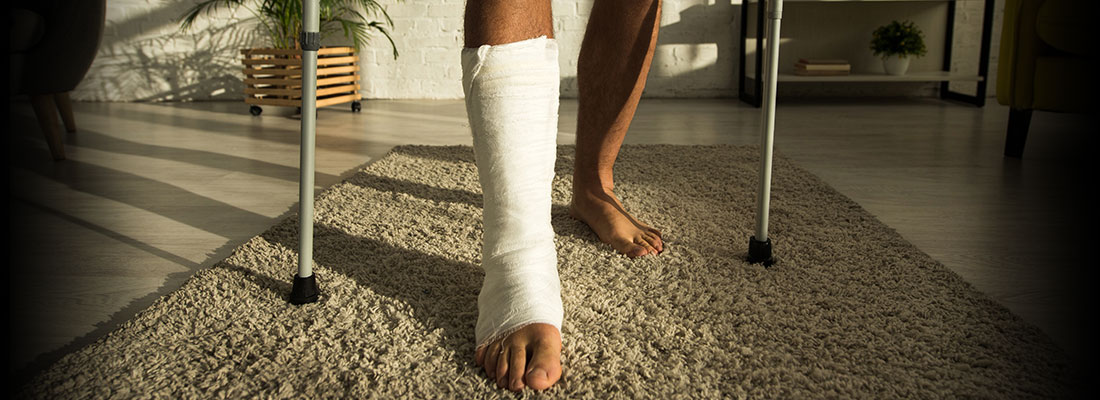

| PREVIOUS | HOME | NEXT |
Appeal Court overturns trampoline injury award
By Kate Tilley
The Queensland Court of Appeal has overturned a trial judge’s ruling that a trampoline manufacturer was liable for injuries to a man who bounced on the equipment.
Justice John Bond, with whom Justices Peter Davis and David Boddice agreed, set aside a 28 May 2024 judgement and ordered the injured man, Phillip Anthony Forostenko, to pay costs.
The primary judge, Justice Melanie Hindman, had awarded Mr Forostenko $744,175, after finding the Springfree trampoline had a safety defect and he was entitled to compensation under the Australian Consumer Law.
Mr Forostenko, a self-employed physiotherapist and exercise physiologist, described as a fit, active, then 41-year-old father, was injured on Christmas Day 2017. While he was an “experienced and enthusiastic” trampoline user, he had not jumped on a Springfree model until he decided to try a new one in his sister’s backyard.
The webbing around the edge of the trampoline’s central mat had, slotted into it at 17.5cm intervals, hard plastic cleats into which one end of the rods that created the trampoline’s bounce mechanism were inserted. Yellow lines showed where the webbing began.
After a “slightly wayward jump” he landed awkwardly on the edge of the trampoline, hitting a cleat, and fractured his right foot. He required surgery and the insertion of plates. He then developed psychological injuries, including anxiety and depression, and had ongoing pain.
Ongoing pain
The trial heard that, since the injury, Mr Forostenko was unable to work effectively or participate in sporting activities without pain, including hockey, running and dog sledding. He was unable to return to pivoting sports, such as tennis, squash, CrossFit or boxing.
Mr Forostenko claimed damages of $3.92 million. He said the trampoline was defective because there was no warning of the existence of cleats on the trampoline’s edge and no advice not to jump on them.
At trial, Justice Hindman agreed. She said: “A clear, visible warning at the entrance to the trampoline could have readily drawn to the attention of users that the cleats in the edge of the mat, if landed on, may increase the risk of a foot roll, and therefore an injury; or that extra caution ought be exercised in jumping on the webbing, or that jumping on the webbing should be avoided.”
Springfree appealed on the basis that a safety defect could not have caused Mr Forostenko’s injuries unless he could prove the counterfactual proposition that his injuries would probably have been avoided if a proper warning had been given.
Counterfactual not proved
Justice Bond agreed, saying Justice Hindman had erred in finding the counterfactual had been proved and the claim should have failed at trial.
The defence submission to Justice Hindman had argued that Mr Forostenko had not demonstrated that, had a warning been given (ie, do not jump in the area of the yellow lines) it would have prevented the injury.
There was a warning to jump in the centre of the mat, but Mr Forostenko did not comply with that.
There was no evidence Mr Forostenko had consulted the warnings affixed to the trampoline or contained in the user manual.
The defence also argued the claim failed on causation because Mr Forostenko’s jump was unintended. “Even if he had received a warning, he did not intend to land where he landed. A warning would not have prevented that.”
Justice Bond agreed, saying Mr Forostenko had not proved the counterfactual proposition that his injuries would probably have been avoided if a proper warning had been given.
No evidence of following warnings
Justice Bond said there was no proof Mr Forostenko would have taken additional care to avoid injury, had a warning been provided. He therefore failed to satisfy his onus to prove causation.
Despite the myriad physical activities he participated in, Mr Forostenko gave no evidence he had ever read or acted on written instructions or warnings for the recreational or household equipment he used, including his own trampoline. “Nor did any other witness called by him, including his wife, suggest he had such a disposition,” Justice Bond said.
Despite not having used a Springfree trampoline before, there was no suggestion that, before deciding to use it, he paused to read any of the warnings displayed on it.
Springfree Trampoline Australia Pty Ltd v Forostenko [2024] QCA 255 (13 Dec 24)
Resolve is the official publication of the Australian Insurance Law Association and
the New Zealand Insurance Law Association.

